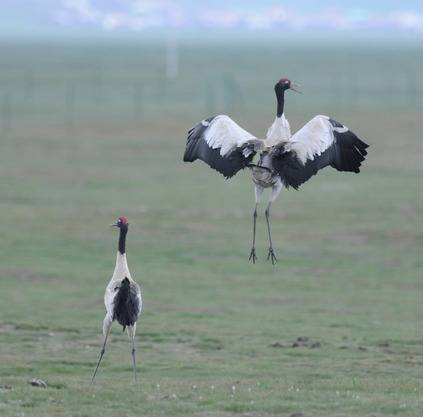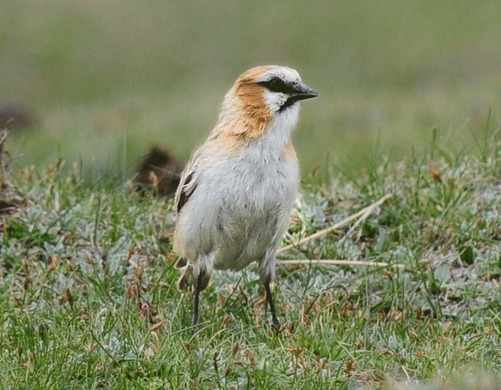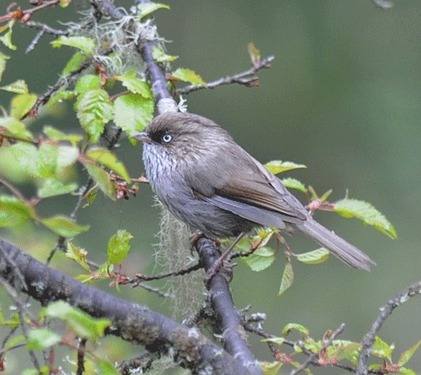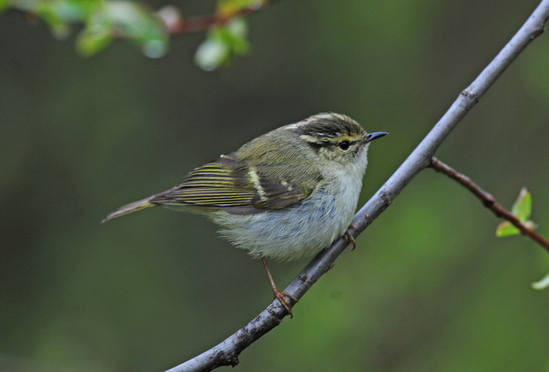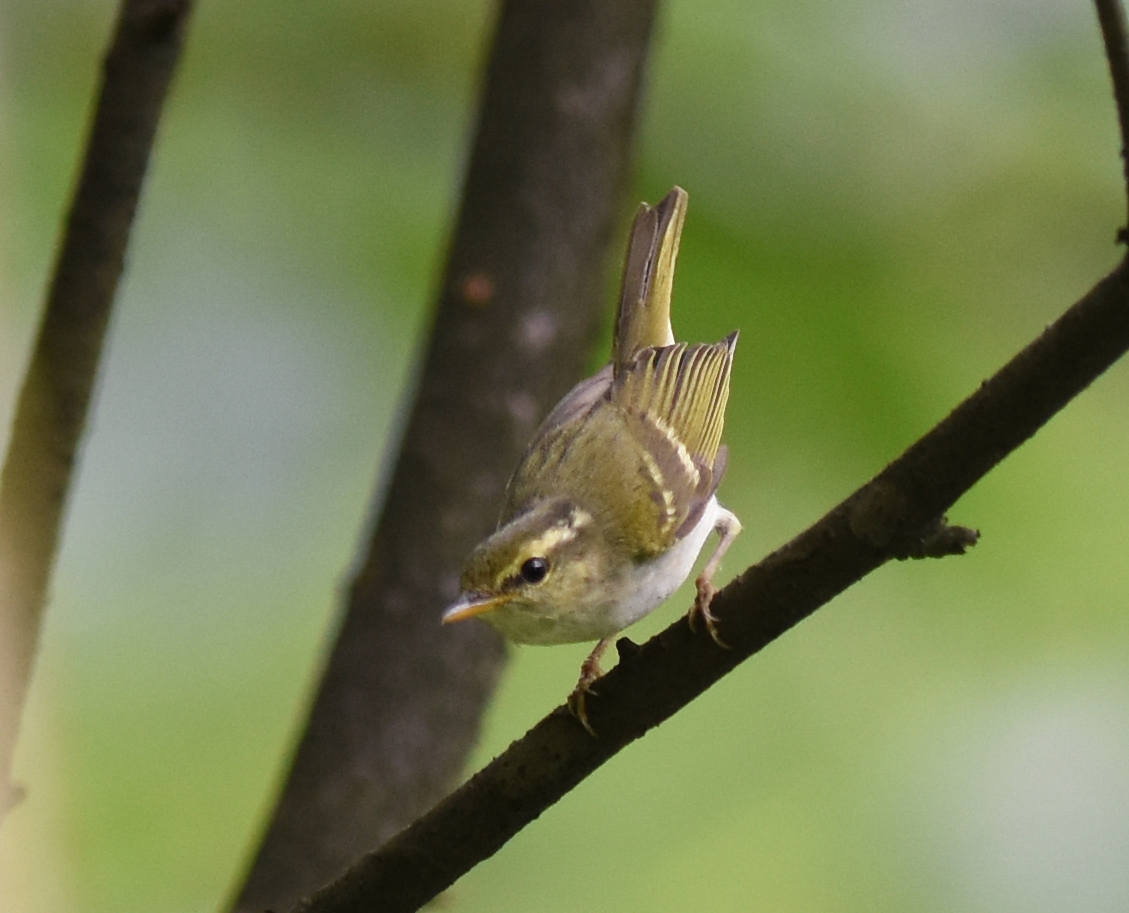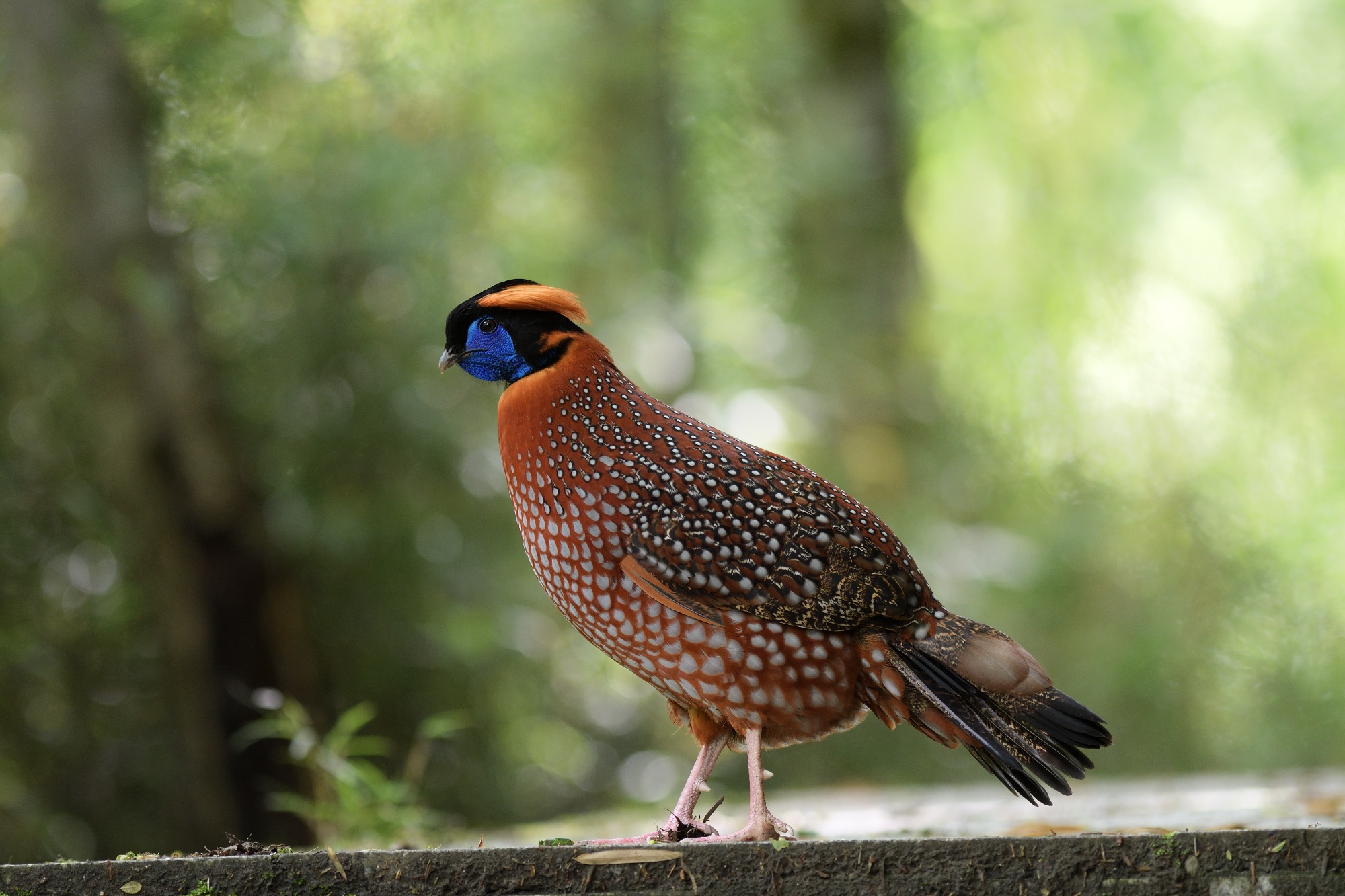SICHUAN & TIBETAN PLATEAU
Day 1 UK - Chengdu - 4th May 2021
Arrival in Chengdu and transfer to our hotel, which is in close proximity to one of the city parks. Time permitting we can take a walk and see our first birds of the tour. Night in Chengdu.
Days 2 – 7 Longcanggou & Erlang Shan
After breakfast we will head south and make a few stops along the way to look for Forest Wagtail, Tiger Shrike and Swinhoe's Minivet which we probably won't see elsewhere. Then we will split our time between three of the finest mountain reserves in Sichuan over the following days in search of numerous key species. Longcanggou is a relatively new site that we first visited in 2013 and is particularly good for Temminck's Tragopan, White-bellied Redstart, White-browed Bush-robin, the extremely localised and endemic Emei Shan Liocichla, Black-faced and Elliott's Laughingthrushes, Grey-hooded, Brown and Great Parrotbills, Aberrant Bush-warbler, and both Kloss's and Emei Leaf-warblers amongst others. There are also chances of seeing Red Panda, as we did on our 2013 tour.
Labahe is a superb area that gives us opportunities to see practically everything that used to be possible at Wawu Shan, before its closure. We will have plenty of time to explore this 3000m mountain by means of a private track that takes you to a scenic boardwalk through moss-encrusted forest and a huge stand of bamboo. Our visit here gives us an outstanding chance of seeing the stunningly beautiful Temminck's Tragopan, as well as Lady Amherst's Pheasant. The mere fact that there isn't a public road to the top makes searching for the specialities a far more pleasant experience requiring a lot less effort! The terrain here consists of jagged mountain peaks, mixed coniferous-rhododendron forest, bamboo and evergreen broadleaf woodland and provides a spectacular setting for our search of Brown, Three-toed, Ashy-throated, Fulvous, Golden and Grey-headed Parrotbills, Rusty and Red-winged Laughingthrushes, Claudia's and Sichuan Leaf-warblers, as well as Buff-throated among 17 other phylloscopus warblers to be recorded here, 7 species of bush-warbler including the endemic Chinese Bush-Warbler, Alstrom's, Bianchi's and Marten's Warblers, Grey-hooded Fulvetta and the near endemic Yellow-bellied Tit. Other special birds here are Chinese Blue Flycatcher, Chinese Song Thrush, Elliott's and Red-winged Laughingthrushes, White-collared Yuhina and Slaty Bunting. There are also a huge selection of other species, many of which range further west across the Himalayas including Crimson-breasted and White-backed Woodpeckers, Large and Whistling Hawk-cuckoos, Oriental and Lesser Cuckoos, Collared Owlet, Rufous-breasted Accentor, White-tailed Robin, White-browed Shortwing, White-bellied Redstart, Fujian and Vivid Niltavas, Chinese and Pygmy Wren-babblers, Blyth's Shrike-babbler, Golden-breasted Fulvetta, Black-chinned Yuhina, Spotted Laughingthrush, Rufous-vented Tit, Gould's Sunbird, Japanese White-eye, both Dark-breasted and Dark-rumped Rosefinches and Grey-headed Bullfinch. On our last visit we even found the rare endemic Golden-fronted Fulvetta and Rufous-tailed Babbler.
Our last special site is Erlang Shan where Lady Amherst's Pheasant, Firethroat, Brown-breasted Bulbul, Black-streaked Scimitar-babbler, the rare Rufous-tailed Babbler, Barred Laughingthrush, Chinese Babax, Chinese Leaf-warbler, Godlewski's Bunting and possibly Streaked Barwing can be found. We will stay at conveniently located lodges/hotels, very close to all of the birding sites.
Days 8 – 10 Labahe - Wolong – Balang Shan
We'll have an early morning excursion for any species still needed before our route takes us up through the bird-rich Balang Shan mountain range where the road reaches its highest point at the 4500m pass and is the right habitat zone for Tibetan Snowcock, Snow Partridge, Chinese Monal, Snow Pigeon, Grandala, Alpine and Red-billed Choughs, Alpine Accentor, Red-fronted Rosefinch and Brandt's Mountain-finch. We will spend 2 full days around the fabulous Balang Shan beginning at daybreak as the rare Wood Snipe displays over the hillsides covered in azalea-scrub. The endemic White Eared-Pheasant forages unobtrusively, Firethroats reside in the bamboo thickets, and both Koklass and Golden Pheasants hide in the undergrowth. Other species here include Lammergeier, Himalayan Griffon Vulture, White-throated Needletail, Crimson-breasted woodpecker, Rosy and Olive-backed Pipits, Chinese Rubythroat (split from Himalayan), Indian Blue Robin, White-browed Bush-robin, White-browed Tit-warbler, White-throated and Daurian Redstarts, Kessler's and Chestnut Thrushes, Spotted Bush-warbler, Alpine and Chinese Leaf-warblers, Barred Laughingthrush, White-browed Fulvetta, White-collared Yuhina, Grey-crested and Fire-capped Tits, Chestnut-flanked White-eye, Spotted Nutcracker, White-winged and Collared Grosbeaks, Maroon-backed Accentor, Slaty Bunting, Plain Mountain-Finch, and Dark-breasted, Pink-rumped, Chinese Beautiful and Streaked Rosefinches. Nights at Rilong.
Days 11 – 12 Balang Shan – Mengbi Shan
If we still need any species there's a final opportunity to return to Balang Shan before leaving the wetter alpine zone and heading into dry valleys cloaked in spruce and pine forest and up to our first taste of the Tibetan avifauna. En-route we will check out some areas for White-tailed Rubythroat, Hill Pigeon, Black-browed Tit and Wallcreeper in a scenic valley. Then we drive along a little used mountain track higher into the marvellous coniferous forests of Mengbi Shan where Verreaux's Monal-Partridge, Firethroat, Sichuan Jay, Chinese Song Thrush, Giant Laughingthrush, Przewalski's Nuthatch, Chinese Fulvetta, Three-banded, Chinese White-browed and Chinese Beautiful Rosefinches reside, while there are further chances of White Eared and Koklass Pheasants, the spectacular Crested Tit-warbler, Long-tailed Thrush, Chinese Babax and Three-banded Rosefinch. Other more widespread species include Black, Rufous-bellied and Three-toed Woodpeckers, Himalayan Bluetail, White-throated Redstart, Hume's and Yellow-streaked Warblers, Bar-tailed Treecreeper, Kessler's and Chestnut Thrushes, Rufous-vented Tit, Maroon-backed Accentor, Pink-rumped Rosefinch, and both White-winged and Collared Grosbeaks. Nights at Maerkang.
Days 13 – 14 Tibetan Plateau
An early start will see us driving along the eastern edge of the Tibetan Plateau where we can explore the wide open grasslands and forest. Here we will look for Black-necked Crane, Golden Eagle, Amur Falcon, Saker, Upland Buzzard, Pale Martin, Brown Dipper, Tibetan Lark, Oriental Skylark, Blyth's Pipit, Tibetan Grey Shrike, Hume's Ground-tit, Chinese Grey Shrike, Pere David's Laughingthrush, Azure-winged Magpie, Rock Sparrow, Godlewski's Bunting, Rufous-necked, Black-winged and White-rumped Snowfinches, the latter usually nest amongst the colonies of Marmots and Pika! The scenery here is unimaginably beautiful and provides a complete contrast to the coniferous forests we have become used to. Flower Lake is a vast area of wetlands where numerous wildfowl reside and often turns up the odd surprise such as White-tailed Eagle or Cinereous Vulture, but this is the best place to look for Tibetan Lark. Secret valleys bathed in high altitude scrub at the edge of the plateau hold the endemic White-browed Tit, whilst some nearby forests hold the shy Severtsov's Grouse, Blue Eared-Pheasant, Blood Pheasant, Black Woodpecker, Przewalski's and Chinese Nuthatches, Slaty-backed and Slaty-blue Flycatchers, Chinese Fulvetta, Sukatschev's Laughingthrush, Sichuan Tit, Tibetan Siskin, Pink-rumped Rosefinch and there are further chances of Crested Tit-warbler. During our previous visits we have seen Tibetan Partridge, Gansu Leaf-warbler, Rosy Starling and Three-banded Rosefinch here, so anything is possible. Nights at Ruoergai.
Days 15 - 16 Tibetan Plateau - Gonggangling Forest - Chengdu
After some final birding here this morning we will leave the forests that border the Tibetan Plateau and drop down into the typical mountainous terrain of northern Sichuan, checking a few special sites along the way for Blue Eared-Pheasant, Severtzov's Tit-warbler, Siberian Rubythroat or Verreaux's Monal-partridge if we still need them. By the end of Day 15 we will have arrived at a superb hotel in the new town of Chuanzhusi. Another early start will see us at Gonggangling Forest, which is an interesting site where we can find a wonderful selection of species. Past visits have produced Severtzov's Grouse, Blood Pheasant, Blue eared-Pheasant, Pere David's Owl, Przewalski's Nuthatch, both Plain-backed and Long-tailed Thrush, Tibetan Siskin, and many other species. During the late morning of Day 16 we will set out on the long drive back to Chengdu.
Day 17 Baihua Tan Park, Chengdu – End of Tour - 20th May 2021
We can check out a nearby park early this morning in search of a few species we may not have seen elsewhere on the tour. In particular we shall look for the endemic Chinese Bulbul and Chinese Blackbird, as well as Rufous-faced Warbler, Ashy-throated and Vinous-throated Parrotbills, White-browed Laughingthrush, Oriental Greenfinch, Crested Myna, Yellow-billed Grosbeak, and both Red-billed and White-cheeked Starlings. Mid-morning transfer to the airport for our return flights home and the end of the tour.
All photos copyright Nick Bray/Zoothera Birding unless otherwise stated. Just hover your cursor over each image for info.

